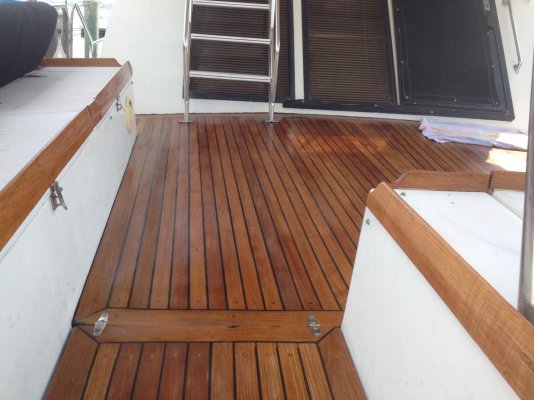Teak cleaner/restorer is a great way to shorten the life of a teak deck. There is only one way to get a teak deck back to brown from silver-gray, and that is to remove the weathered wood cells. You can do it with sandpaper or you can do it with the teak cleaners/restorers. The end result is the same.
Sandpaper removes the wood mechanicaly, teak cleaners/restorers remove the wood chemically. Either way, wood goes away and you cannot get it back. The more you use teak cleaner/restorer, the faster the deck goes away. If you insist on using a teak cleaner/restorer, every time you apply it imagine yourself giving the deck a sanding because that is exactly what you're doing.
If one is interested in maximizing the longevity of a teak deck, there are only two things that have to be done. One, learn to love silver-gray. Two, keep it clean by regular washings with a string mop or sponge and saltwater with a soap like Lemon Joy that makes good suds in cold water.
That's it. One to three times a year depending on how dirty the environment is, it's a good idea to give the deck a bit of a light scrubbing with a doodle bug and the salt water/Joy mixture to get out deeper dirt.
So.... never use sandpaper, never use teak cleaners/restorers, never use a power washer, and try to never wash or scrub the deck with the grain. Always go across the grain unless deck hardware prevents this.
Our boat still has its original teak deck, which is now 42 years old. Previous owners over-sanded it, but it's still serviceable. Given the expense of replacing a teak deck, and the fact that we don't like fiberglass deck surfaces, we are naturally interested in making our deck last as long as we possible can.
To that end, over the last 16 years we have learned a hell of a lot about teak decks, their care and feeding, how to repair and replace deck seams, what deck seam material is the best, the whole nine yards.
Bottom line is keep the seams in the proper condition, keep the deck screws covered with teak plugs properly seated and glued, keep the deck clean, and don't do anything that can cause wood cells to go away.

